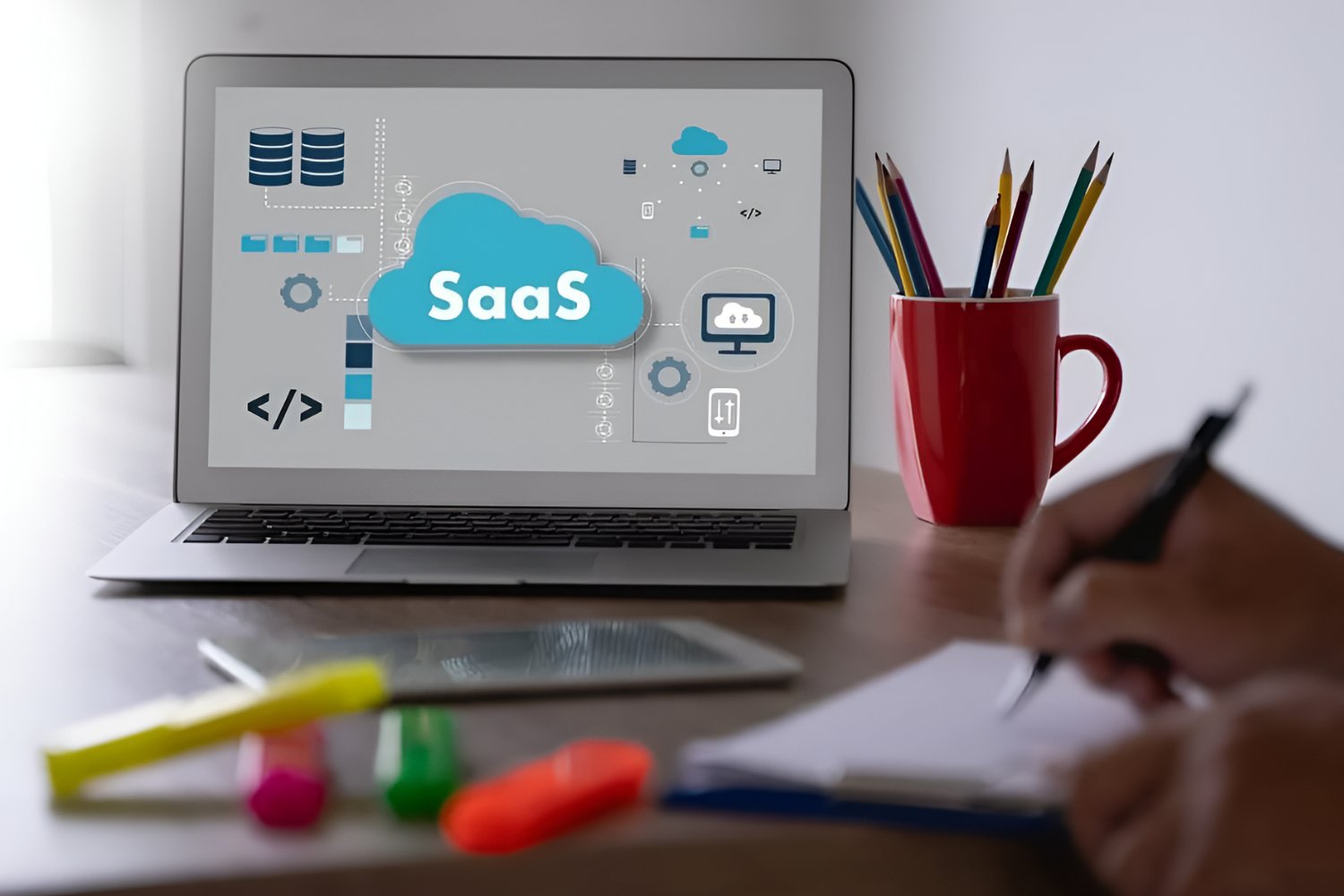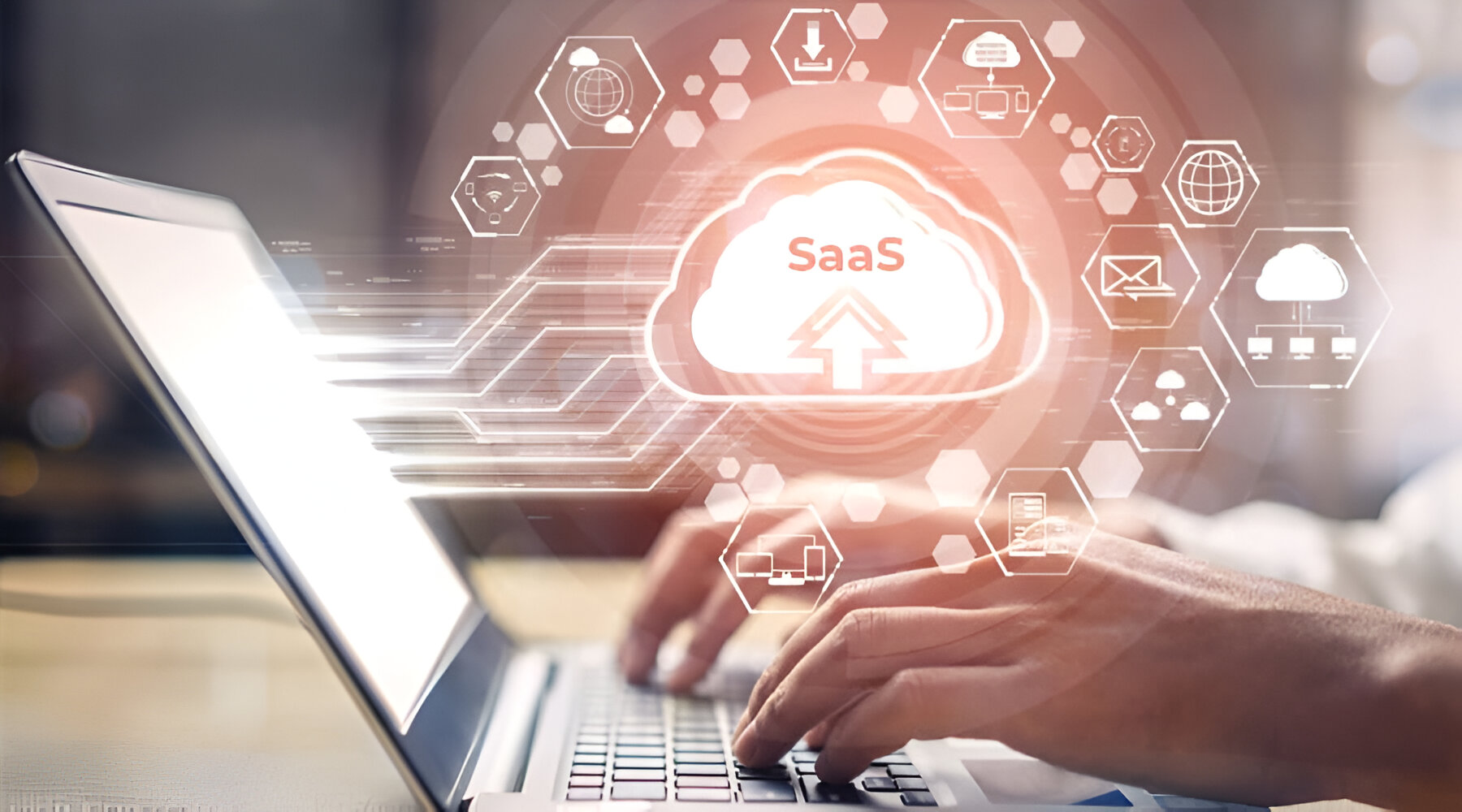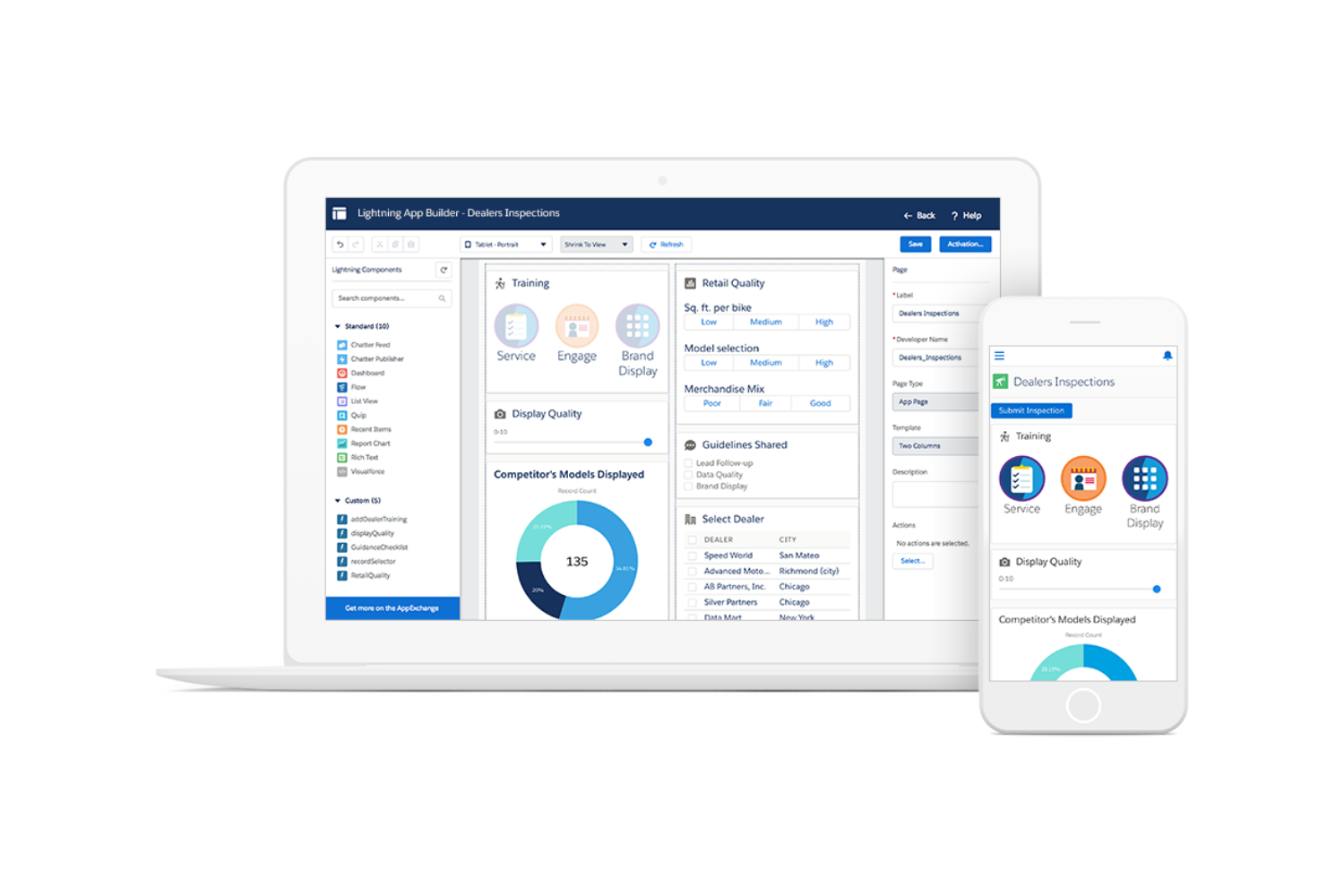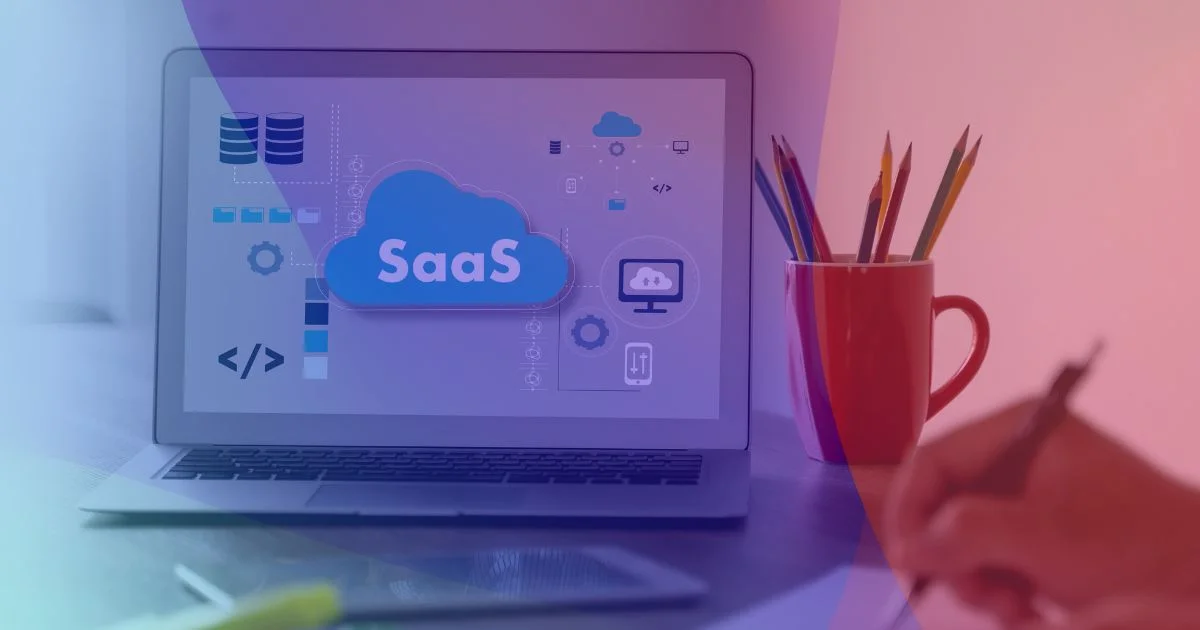Introduction
The world of software has evolved rapidly over the years, and one of the most significant advancements in recent times is the rise of Software-as-a-Service (SaaS). With the increasing demand for flexible and scalable software solutions, businesses are turning to SaaS-based software as a viable option. But what exactly is SaaS, and why has it become so popular?
SaaS, also known as cloud software, is a software delivery model where applications are hosted by a service provider and made available to customers over the internet. Unlike traditional software, which is installed and maintained on individual computers or servers, SaaS operates entirely on the cloud. This means that users can access the software and its features through a web browser, without the need for complex installations or infrastructure investments.
The rise of SaaS can be attributed to several factors. Firstly, the subscription-based pricing model eliminates the need for upfront costs, making it more affordable and accessible for businesses of all sizes. Additionally, SaaS offers scalability, allowing organizations to easily scale up or down their usage based on their needs. The automatic updates and maintenance provided by the service provider also relieve businesses of the burden of managing software upgrades and bug fixes.
Another significant advantage of SaaS-based software is the convenience it offers. Users can access their applications and data from anywhere, at any time, as long as they have an internet connection. This opens up opportunities for remote collaboration and increases productivity for teams spread across different locations or working remotely. Furthermore, the adoption of SaaS eliminates the need for manual software installations and updates, saving valuable time and resources for businesses.
SaaS-based software also provides a high level of customization and integration capabilities. Users can easily integrate their SaaS applications with other tools and systems, such as CRM platforms or project management software, creating a seamless workflow and enhancing overall efficiency. The flexibility of SaaS allows businesses to customize the software to meet their specific needs, ensuring that they have access to the features and functionalities that are most relevant to their operations.
In summary, SaaS-based software has revolutionized the way businesses access and utilize software applications. With its subscription-based pricing, scalability, convenience, and customization options, it offers a compelling alternative to traditional software models. In the following sections, we will explore how SaaS works, the differences between SaaS and traditional software, key features of SaaS-based software, popular applications in the market, and how to determine if SaaS is the right fit for your business.
What is SaaS?
Software-as-a-Service (SaaS) is a software delivery model where applications are hosted and operated by a service provider. Instead of purchasing and installing software on individual computers or servers, users access the software through the internet, typically via a web browser.
With SaaS, the service provider is responsible for the infrastructure, maintenance, and management of the software, allowing users to focus on utilizing the application rather than dealing with technical aspects. This means that businesses can avoid the hassle of software installation, updates, and troubleshooting, all of which are handled by the service provider.
SaaS applications are typically accessed on a subscription basis, with users paying a recurring fee for the service. This subscription-based pricing model offers several advantages over traditional software licensing, such as lower upfront costs, predictable budgeting, and the ability to scale usage as the business needs evolve.
One of the key benefits of SaaS is its accessibility. Users can access their applications and data from anywhere with an internet connection, enabling remote work and collaboration. This flexibility is particularly valuable for distributed teams or businesses with employees working from different locations.
Moreover, SaaS providers often offer automatic software updates, ensuring that users have access to the latest features and security patches without the need for manual intervention. This eliminates the burden of managing software updates and allows businesses to leverage the most up-to-date technology to stay competitive in their respective industries.
SaaS also provides scalability, enabling businesses to easily adapt their software usage based on their needs. As companies grow or experience fluctuations in demand, they can quickly and seamlessly adjust their subscription plan to accommodate these changes. This scalability eliminates the need for costly hardware investments or the risk of overpaying for unused software licenses.
In summary, SaaS is a software delivery model that offers numerous advantages over traditional software installations. Through its subscription-based pricing, accessibility, automatic updates, and scalability, SaaS provides businesses with a cost-effective and flexible solution for accessing and utilizing software applications. In the following sections, we will delve deeper into how SaaS works, the differences between SaaS and traditional software, the key features of SaaS-based software, popular applications in the market, and how to determine if SaaS is the right fit for your business.
Advantages of SaaS-Based Software
SaaS-based software offers numerous advantages that make it an attractive choice for businesses of all sizes and industries. Let’s explore some of the key advantages of adopting SaaS in your organization.
- Lower upfront costs: Unlike traditional software, which often requires a significant upfront investment, SaaS operates on a subscription-based model. This means that businesses can avoid the high initial costs associated with software licenses, hardware, and infrastructure. Instead, they pay a predictable monthly or annual fee, making it more cost-effective and accessible.
- Scalability: SaaS offers scalability, allowing businesses to easily adjust their subscription plans based on their needs. Whether you’re experiencing rapid growth or need to scale back on your software usage, SaaS provides the flexibility to scale up or down without the hassle of purchasing additional licenses or hardware.
- Accessibility: With SaaS, users can access their applications and data from anywhere with an internet connection. This provides the freedom and flexibility for remote work, enabling employees to work from home or collaborate with colleagues in different locations. This accessibility enhances productivity and collaboration, particularly in today’s increasingly remote and distributed work environments.
- Automatic updates and maintenance: SaaS providers are responsible for the maintenance, updates, and security of the software. They handle tasks such as software updates, bug fixes, and data backups, relieving businesses of the burdensome and time-consuming task of managing such maintenance activities. This ensures that businesses always have access to the latest software features and security enhancements without any manual intervention.
- Integration capabilities: SaaS applications are designed to integrate seamlessly with other tools and systems, such as customer relationship management (CRM) software or project management platforms. This integration capability allows businesses to create a unified and efficient workflow by centralizing data and processes, leading to enhanced productivity and streamlined operations.
Additionally, SaaS-based software offers benefits such as improved security, as SaaS providers have dedicated teams focused on data protection and encryption. Furthermore, SaaS eliminates the need for manual software installations and reduces compatibility issues, as the application can be accessed through a web browser, irrespective of the operating system or device.
In summary, the advantages of SaaS-based software, including lower upfront costs, scalability, accessibility, automatic updates, maintenance, and integration capabilities, make it an appealing choice for businesses seeking a streamlined, cost-effective, and flexible solution for their software needs. In the following sections, we will delve deeper into how SaaS works, the differences between SaaS and traditional software, the key features of SaaS-based software, popular applications in the market, and how to determine if SaaS is the right fit for your business.
How SaaS Works
Understanding how Software-as-a-Service (SaaS) works is essential to grasp its benefits and make informed decisions for your business. Let’s explore the key components and processes involved in the functioning of SaaS-based software.
1. Infrastructure: SaaS applications are hosted and operated on the infrastructure provided by the service provider. This includes servers, storage, networking, and security systems. The infrastructure is robust and scalable, capable of handling the needs of multiple customers simultaneously.
2. Multi-tenancy: Multi-tenancy is a fundamental characteristic of SaaS. It means that a single instance of the software runs on the service provider’s infrastructure and serves multiple customers (referred to as tenants) securely and independently. Each customer’s data and application usage are separated, ensuring privacy and security.
3. Web-based access: SaaS applications are accessed through a web browser, eliminating the need for complex installations on local machines. Users can simply log in to the application using their credentials and access all the features and functionalities from any device with an internet connection.
4. Subscription model: SaaS operates on a subscription-based pricing model. Customers pay a recurring fee, typically on a monthly or annual basis, to access the software and its services. This model provides businesses with predictable costs and the flexibility to scale their usage according to their needs.
5. Automatic updates and maintenance: SaaS providers handle all software updates, maintenance, and support. They apply patches, enhancements, and new features seamlessly without interrupting the user experience. This ensures that customers always have access to the latest version of the software, with enhanced security and improved functionality.
6. Data security and backups: SaaS providers prioritize the security of customer data. They employ robust security measures, such as encryption, firewalls, and regular backups, to protect data from unauthorized access, loss, or damage. These measures provide businesses with peace of mind regarding the safety and integrity of their critical information.
7. Service level agreements (SLAs): SaaS providers often operate under service level agreements, which outline the level of service, uptime, and support the customer can expect. SLAs provide customers with guarantees regarding performance, availability, and response times, ensuring a reliable and consistent experience.
SaaS streamlines software delivery by eliminating the need for upfront investments, infrastructure management, and complex installations. The service provider takes care of all technical aspects, allowing businesses to focus on utilizing the software to drive their operations and growth. In the following sections, we will explore the differences between SaaS and traditional software, the key features of SaaS-based software, popular applications in the market, and how to determine if SaaS is the right fit for your business.
Differences Between SaaS and Traditional Software
When comparing Software-as-a-Service (SaaS) and traditional software, several key differences emerge. Understanding these distinctions is crucial in determining the most suitable software model for your business. Let’s explore the major differences between SaaS and traditional software.
- Deployment: Traditional software is typically installed and hosted on individual computers or servers within the organization’s premises. In contrast, SaaS operates on the cloud, with the software hosted and managed by a service provider. This eliminates the need for complex installations and allows users to access the software through a web browser.
- Cost structure: Traditional software generally involves significant upfront costs, including software licenses, hardware, and infrastructure investments. On the other hand, SaaS operates on a subscription-based model, where users pay a recurring fee based on their usage. This subscription model enhances cost predictability and eliminates the need for large upfront investments.
- Maintenance and updates: With traditional software, users are responsible for maintaining the application, applying updates, and resolving any technical issues that arise. In contrast, SaaS providers handle all maintenance, updates, and bug fixes. This ensures that businesses always have access to the latest software version and relieves them of the burden of technical maintenance.
- Scalability and flexibility: Traditional software often requires additional hardware and infrastructure investments when businesses experience growth or need to expand their software usage. With SaaS, scalability is much easier as users can simply adjust their subscription plan to accommodate changing needs. This flexibility allows businesses to scale up or down as required, avoiding unnecessary costs or unused software licenses.
- Accessibility: Traditional software is typically installed on specific devices or servers, limiting access to users within the organization’s premises. SaaS, on the other hand, offers web-based access, enabling users to access their applications and data from anywhere, as long as they have an internet connection. This accessibility facilitates remote work, collaboration, and enhanced productivity.
- Integration: Traditional software often requires additional customization or integration efforts to connect with other tools and systems used within the organization. SaaS applications, on the other hand, are designed with integration capabilities in mind. They can easily integrate with other software platforms, such as customer relationship management (CRM) or project management tools, creating a seamless workflow and enhancing productivity.
These differences highlight the shift in software delivery and usage brought about by the advent of SaaS. While traditional software installations have their merits, SaaS provides businesses with a more cost-effective, flexible, and accessible solution. In the following sections, we will delve into the key features of SaaS-based software, popular applications in the market, and how to determine if SaaS is the right fit for your business.
Key Features of SaaS-Based Software
Software-as-a-Service (SaaS) offers a range of distinctive features that set it apart from traditional software solutions. These features contribute to the popularity and appeal of SaaS-based software among businesses. Let’s explore the key features of SaaS.
- Web-based access: SaaS applications can be accessed through a web browser, eliminating the need for complex installations or specific devices. Users can access their applications and data from anywhere with an internet connection, providing flexibility and enabling remote work.
- Flexibility and scalability: SaaS allows businesses to scale their software usage up or down based on their needs. Users can easily adjust their subscription plans, adding or removing users or features, without the need for additional investments or installation efforts. This flexibility ensures that businesses only pay for what they need and can effortlessly accommodate changes in demand.
- Automatic updates and maintenance: SaaS providers handle all software updates, ensuring that users always have access to the latest features and security enhancements. This eliminates the need for manual updates and maintenance tasks, saving time and resources for businesses.
- Integration capabilities: SaaS-based software is designed to integrate seamlessly with other tools and systems, such as customer relationship management (CRM) platforms or project management software. This integration capability allows businesses to create a unified and efficient workflow, streamlining processes and enhancing productivity.
- Subscription-based pricing: SaaS operates on a subscription model, where businesses pay a recurring fee for the software and its services. This subscription pricing model offers cost predictability and eliminates the need for large upfront investments in software licenses and infrastructure.
- Enhanced security and data protection: SaaS providers prioritize data security and employ robust measures to protect customer data. This includes encryption, regular backups, and strict access controls. By leveraging the security expertise of the SaaS provider, businesses can enhance their data protection efforts.
- Cross-platform compatibility: SaaS applications are accessible from any device with an internet connection, regardless of the operating system. This cross-platform compatibility allows businesses to use a variety of devices without compatibility issues, enabling seamless collaboration and productivity.
- Customer support and service level agreements (SLAs): SaaS providers offer customer support and operate under service level agreements (SLAs) that outline the level of service and support customers can expect. This ensures that businesses receive timely assistance and guarantees on performance and uptime.
These key features make SaaS-based software an attractive option for businesses seeking cost-effective, flexible, and accessible software solutions. In the following sections, we will explore popular SaaS applications in the market, as well as how to determine if SaaS is the right fit for your business.
Popular SaaS Applications
The Software-as-a-Service (SaaS) market offers a wide range of applications to cater to the varying needs of businesses across different industries. Let’s take a look at some popular SaaS applications that have gained significant traction in the market.
- Customer Relationship Management (CRM): CRM software helps businesses manage and track interactions with customers and prospects. Applications like Salesforce, HubSpot, and Zoho CRM offer comprehensive features for managing sales pipelines, marketing campaigns, customer support, and analytics.
- Productivity and Collaboration: SaaS applications such as Google Workspace (formerly G Suite), Microsoft 365 (formerly Office 365), and Slack are widely used for productivity and collaboration purposes. These platforms offer a suite of tools for email, document creation and sharing, communication, and project management, enabling seamless collaboration and improved productivity.
- Project Management: Project management software like Asana, Trello, and Monday.com help businesses organize and streamline their projects. These applications provide features such as task management, team collaboration, timeline tracking, and reporting, allowing teams to effectively plan, execute, and monitor projects.
- Human Resources (HR) Management: SaaS HR management software, including Workday, BambooHR, and ADP, simplifies and automates various HR functions, such as employee onboarding, payroll processing, time tracking, performance management, and benefits administration. These applications streamline HR processes and enhance the overall employee experience.
- Sales and Marketing: SaaS applications like Marketo, HubSpot Marketing, and Mailchimp offer powerful tools for sales and marketing automation. They enable businesses to manage their marketing campaigns, track leads, automate email marketing, and analyze campaign performance, helping them to generate and nurture leads more effectively.
- Accounting and Finance: Cloud-based accounting software, including QuickBooks, Xero, and FreshBooks, provides businesses with efficient tools to manage their financial operations. These applications offer features such as invoicing, expense tracking, financial reporting, and tax management, simplifying the accounting process and improving financial visibility.
- Customer Support: SaaS-based customer support platforms like Zendesk, Freshdesk, and Help Scout help businesses deliver exceptional customer service. These applications offer features such as ticket management, knowledge base creation, live chat, and social media integration, enabling businesses to provide timely and personalized support to their customers.
These are just a few examples of the popular SaaS applications available in the market. Each application serves a specific purpose and provides businesses with the tools they need to streamline their operations, enhance productivity, and improve customer experiences. It’s important to carefully assess your business requirements and choose the SaaS applications that align with your specific needs.
Is SaaS Right for Your Business?
When considering adopting Software-as-a-Service (SaaS) for your business, it’s essential to evaluate whether it aligns with your specific needs, goals, and circumstances. Let’s explore some factors to consider when determining if SaaS is the right fit for your business.
1. Scalability: If your business is experiencing growth or anticipates scaling in the future, SaaS offers the flexibility to easily adjust your software usage to accommodate those changes. You can easily add or remove users, access additional features, or scale up or down without the need for significant investments or complex installations.
2. Cost-effective pricing: SaaS operates on a subscription-based model, which can be more cost-effective for businesses, especially compared to the upfront costs associated with traditional software. With SaaS, you pay a regular fee based on your usage, allowing for better budget predictability and cost control.
3. Accessibility and remote work: If your business relies on remote work or has distributed teams, SaaS offers the advantage of web-based access. Users can securely and easily access their applications and data from anywhere with an internet connection, which enhances collaboration and productivity across different locations.
4. Centralized updates and maintenance: SaaS providers handle all software updates and maintenance tasks. This ensures that you always have access to the latest features and security enhancements without the need for manual intervention. It allows your IT team to focus on other strategic initiatives rather than spending valuable time on software maintenance.
5. Integration capabilities: If you require seamless integration with other tools and systems used within your organization, SaaS applications often offer robust integration capabilities. This allows you to connect your SaaS applications with CRM systems, project management tools, or other essential software, creating a cohesive workflow and improving productivity.
6. Data security and compliance: SaaS providers prioritize data security and compliance. They employ stringent security measures, including encryption, firewalls, and regular backups, to protect your data from unauthorized access and ensure compliance with relevant regulations. If data security and compliance are critical concerns for your business, SaaS can provide peace of mind.
7. Industry-specific solutions: Many SaaS providers offer industry-specific solutions tailored to the unique needs and requirements of specific sectors. If you operate in a specialized industry, exploring industry-specific SaaS applications can provide you with software that aligns closely with your business processes and goals.
It’s important to assess your specific business requirements, budget, and growth plans when determining if SaaS is the right fit. While SaaS offers numerous benefits, it’s important to weigh them against your unique circumstances and consider any potential limitations or challenges that might arise. Carefully assessing these factors will help you make an informed decision about adopting SaaS for your business.
Conclusion
Software-as-a-Service (SaaS) has revolutionized the world of software by offering businesses a flexible, cost-effective, and accessible solution for their software needs. With its subscription-based pricing, scalability, easy accessibility, automatic updates, integration capabilities, and enhanced security, SaaS has become increasingly popular among businesses across various industries.
SaaS eliminates the need for upfront investments, complex installations, and manual maintenance activities associated with traditional software. It allows businesses to focus on utilizing the software to drive their operations, enhance collaboration, and streamline workflows. The convenience of web-based access enables remote work and facilitates seamless collaboration among distributed teams.
The key features of SaaS, such as automatic updates, scalability, and integration capabilities, empower businesses to adapt and grow in a rapidly changing business environment. Additionally, the availability of popular SaaS applications in various domains, including CRM, productivity and collaboration, project management, HR management, sales and marketing, accounting and finance, and customer support, provides businesses with tailored solutions to meet their specific needs.
While SaaS offers numerous advantages, it is important to evaluate its suitability for your business based on factors such as scalability requirements, budget, accessibility needs, integration capabilities, data security concerns, and industry-specific solutions.
In conclusion, SaaS-based software offers a compelling alternative to traditional software models, enabling businesses to harness the power of technology more efficiently and effectively. By understanding the key aspects of SaaS and assessing your business requirements, you can make an informed decision about adopting SaaS and leverage its benefits to drive growth, enhance productivity, and stay competitive in the dynamic marketplace.

























